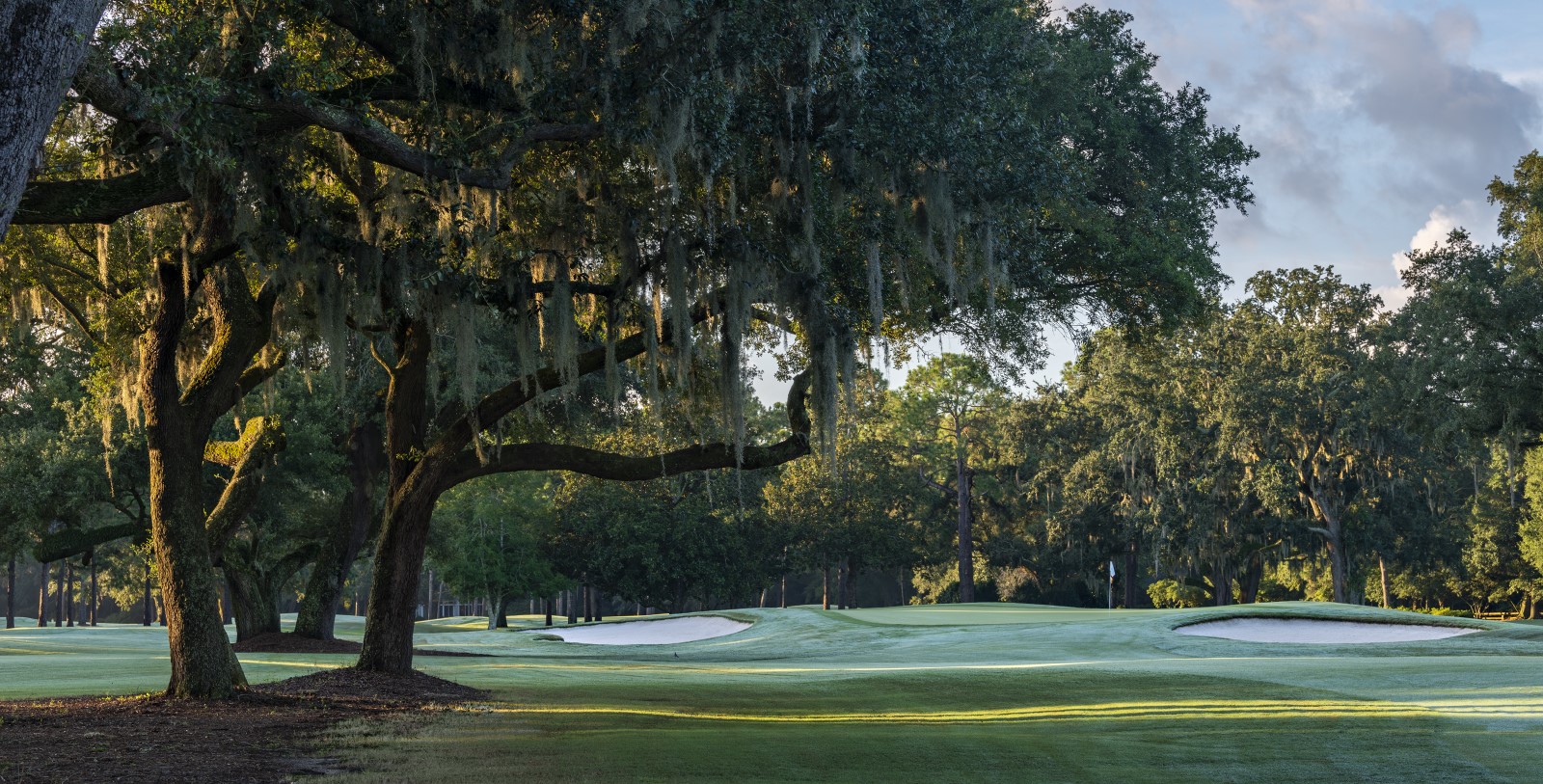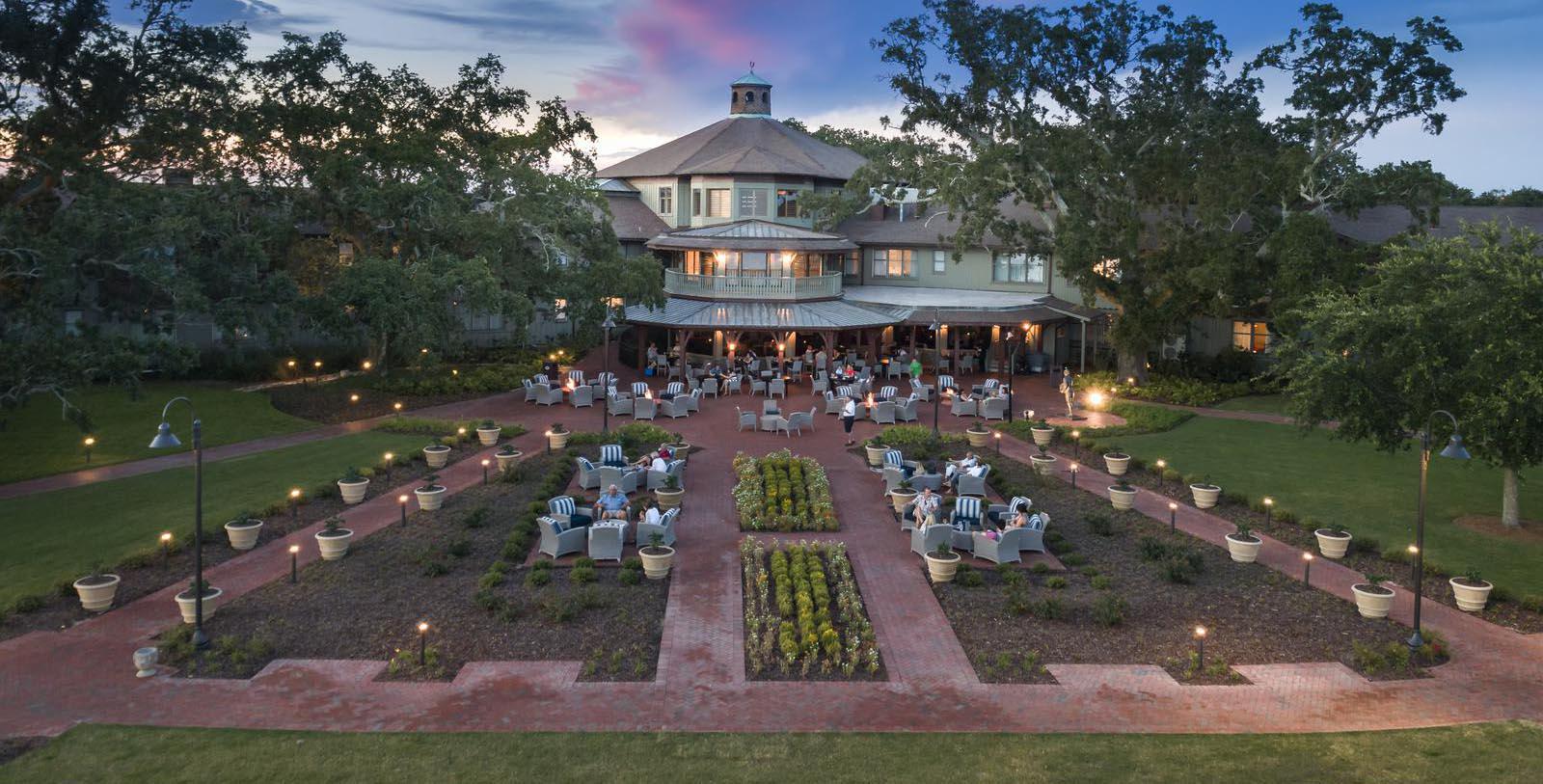Receive for Free - Discover & Explore eNewsletter monthly with advance notice of special offers, packages, and insider savings from 10% - 30% off Best Available Rates at selected hotels.
golf
Discover the Dogwood and Azalea Courses at the Grand Hotel Golf Resort & Spa's historic Lakewood Club.
Grand Hotel Golf Resort & Spa's golf heritage dates back to when the Lakewood Club first opened in 1947.
VIEW TIMELINEAdditional activities:
- Grandeur, Grit and Glory (Daily cannon firing)
- Nall Art Gallery
- Historical and horticultural property tours
- Estate garden
- Bayside putting green
- Biking trail and bikes
- Jogging/fitness trail
- Beach volleyball
- Two outdoor pools, one indoor pool, and a pool slide (towels available)
- Pool and beach cabanas (additional fee)
- Horseshoes
- Corn hole
- Ladder ball
- Bocce ball
- Championship croquet
- Tetherball
- Fitness center
- Fishing poles and bait
- Non-motorized watercraft (seasonal)
- Duck feeding
- Tennis
- Pickleball
- Table tennis
- Board games, books, and Lego in the game room
- Arcade (additional fee)
- Special holiday activities for Easter, Memorial Day, 4th of July, Labor Day, Thanksgiving, and Christmas
-
About the Location +
Grand Hotel Golf Resort & Spa’s historic Lakewood Club has been a part of the prestigious Robert Trent Jones Golf Trail since 2005. Indeed, it is just one of 25 courses to have such a hallowed distinction today. The trail itself dates back to the early 1980s, when David G. Bronner—the CEO of the Retirement Systems of Alabama—first conceived of the idea. Searching for a way to diversify the state’s pension fund, Bronner decided to invest heavily into the construction of elite public golf courses. He specifically believed that golf would boost tourism to the state, thus enhancing Alabama’s entire economy and providing a great return on the investment. In his opinion, “the stronger the Retirement Systems of Alabama can make Alabama, the stronger the Retirement Systems will be.” Bronner subsequently reached out to the esteemed golf course architect Robert Trent Jones Sr. to help create the prospective public fairways. Jones was by now one of the world’s most preeminent golf architects, having designed the likes of courses like Spyglass Hill at the Pebble Beach Golf Links. As such, hopes for the project were very high. The project was incredibly extensive, too, lasting for several years. But when the eponymously named Robert Trent Jones Golf Trail finally opened in 1992, it was one of the most magnificent golfing facilities on the planet. It bore the distinction of being the largest golf construction project ever undertaken, composed of a total of 378 holes at eight different sites. Much to Bronner’s delight, the courses on the trail immediately rose in national prominence. In fact, groups of amateur golfers would routinely rent campers in order to travel around the state to experience the trail’s extensive offerings. The Robert Trent Jones Golf Trail has since grown to number 26 different courses scattered across Alabama. They nonetheless remain some of the most spectacular courses in America, with two—Capitol Hill and Magnolia Grove—even host professional tournaments. Few golfing destinations can match the prestige of the Robert Trent Jones Golf Trail.
-
About the Architect +
Perry Maxwell: A founding member of the American Society of Golf Course Architects, Perry Maxwell is remembered today as being one of the nation’s preeminent golf course designers. Born in Kentucky during the 1870s, Maxwell would eventually move to Ardmore, Oklahoma, as a young man. The move specifically happened to help him deal with ongoing bouts of tuberculosis, which he had contracted while studying classical literature in college. While living in Ardmore, Maxwell subsequently applied for a job at the Ardmore National Bank and rose to become its Vice President. He met his wife, Ray Woods, in Ardmore, and the two raised a family not long thereafter. Maxwell’s passion for golf also emerged during his time in Ardmore, after his wife showed him an article about the National Golf Links of America in Scribner’s Magazine. Upon consulting with the club’s architect, Charles B. Macdonald, Maxwell decided to create his own golf course on land he owned that once belonged to a dairy farm. Debuting with only nine holes in 1913, the course would gradually evolve into the celebrated Dornick Hills Golf & Country Club. (The back nine appeared approximately ten years later.) Even though he was not formally trained in landscaping, Maxwell’s course nonetheless impressed the locals who played on it. Despite its success, Maxwell would not create another course until after Ray Woods’ death in 1919. Seeking solace in his work, he subsequently traveled to Scotland where he could learn as much as possible about golf course architecture. The visit proved to be influential Maxwell and his growing design philosophies. Indeed, he created various concepts that involved using the natural topography to craft challenging holes. Perhaps the most iconic ways he would manipulate the land were the creation of deep, undulating greens and the inclusion of geological cliffs.
Upon his return to the United States, Maxwell immediately set about constructing a number of golf courses in his native Oklahoma. Among the first projects that he pursued was the development of the Muskogee Country Club, the Hillcrest Country Club, and the Twins Hills Golf & Country Club. Twin Hills was to be the crown jewel of his earliest designs and it would eventually host the 1935 PGA Championship. His work in Oklahoma earned him a wealth of admirers throughout the country, which made him a prominent name in the world of golf. One of his greatest fans was the great Alister McKenzie, who formed a partnership with Maxwell in 1931. Together, McKenzie and Maxwell created some of the best golf courses in the country, including Crystal Downs Country Club, Melrose Country Club, and the Oklahoma City Country Club. Maxwell’s finest work transpired while working on Augusta National Golf Club with McKenzie. His input proved invaluable, particularly for the creation of the 10th hole, now known as “Camilla.” But the partnership was short-lived, as McKenzie died not long after in 1934. Nevertheless, Maxwell continued to design numerous courses on his own, with some historians suggesting that it was the most prosperous phase of his career. Indeed, among the courses that he would help craft were the Pine Valley Golf Club, the Philadelphia Golf Club, and the Colonial Country Club. He even returned to Augusta National to completely redesign the 11th and 18th holes. Maxwell’s career remained strong even as cancer gave him serious health problems during the 1940s. Indeed, it was during this time that Maxwell developed the Lakewood Club’s iconic Dogwood Course. Unfortunately, he could not overcome his poor health and passed away in 1952. He has since been remembered as the “father of Oklahoma golf.”
-
Famous Historic Golfers +
Bob Hope, comedian and patron of the United Service Organization (USO).
Billy Graham, Baptist minister and spiritual leader to every U.S. President from Harry S. Truman to Barack Obama.
Bear Bryant, head football coach for the University of Alabama
Gerald Ford, 38th President of the United States (1974 – 1977)



































